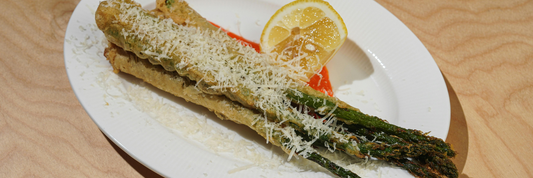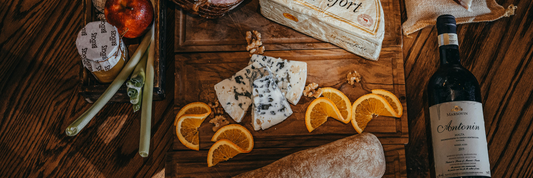When it comes to preparing meat, the cutting board is one of the most essential tools in your kitchen. Selecting the right cutting board for meat is not just about aesthetics; it plays a critical role in ensuring food safety, protecting your knives, and enhancing your cooking experience. This guide explores everything you need to know to make the best choice.
Why Choosing the Right Cutting Board for Meat Matters
Cutting boards are more than just a surface to chop on—they play a vital role in:
- Food Safety: The right material minimizes bacterial growth and is easier to sanitize.
- Knife Maintenance: Proper boards reduce wear on your knife edges.
- Durability: A good cutting board withstands repeated use, even when working with tough cuts of meat.
Using the wrong cutting board can lead to cross-contamination, blunt knives, or the board itself deteriorating over time.
Types of Cutting Boards for Meat
Wooden Cutting Boards For Meat
Wood cutting boards are a popular choice due to their durability, natural aesthetic, and knife-friendly surfaces.
-
Advantages:
- Gentle on knives, helping maintain sharp edges.
- Naturally antimicrobial due to the wood’s tight grain.
- Attractive for serving meat dishes like charcuterie or roasts.
-
Drawbacks:
- Require regular maintenance, such as oiling.
- Not dishwasher-safe.
- Can absorb meat juices if not sealed properly, posing a potential hygiene risk.
-
Recommended Woods for Meat Cutting Boards:

Plastic Cutting Boards For Meat
Plastic boards are often favored for raw meat preparation because they are easy to clean and affordable.
-
Advantages:
- Nonporous, preventing the absorption of liquids.
- Lightweight and dishwasher-safe for quick sanitization.
- Available in various colors, making it easier to designate separate boards for meat, vegetables, and other foods.
-
Drawbacks:
- Prone to knife marks, which can harbor bacteria if not properly cleaned.
- Less durable over time compared to wood.

Bamboo Cutting Boards For Meat
Bamboo boards are an eco-friendly and sustainable choice, often blending aesthetics with practicality.
-
Advantages:
- Naturally harder than traditional wood, making them less prone to scratches.
- Resistant to moisture and slightly less porous than wood.
- Eco-friendly and biodegradable.
-
Drawbacks:
- Hard surface can dull knife edges faster than wood.
- Requires periodic oiling to maintain its durability.

Composite Cutting Boards For Meat
Composite cutting boards for meat are made from layers of wood fibers or paper bonded together using food-safe resin under high pressure. This process creates a dense, durable surface that combines the natural look of wood with the high performance of synthetic materials.
-
Advantages:
- Extremely durable and resistant to warping.
- Nonporous, preventing the absorption of meat juices.
- Knife-friendly surface similar to wood, reducing blade dulling.
- Dishwasher-safe in most cases.
-
Drawbacks:
- Heavier than plastic boards.
- Typically more expensive than wood or plastic options.

Features to Look For in a Meat Cutting Board
Choosing a cutting board involves more than picking a material. Here are the key features to consider:
1. Size and Thickness
- Opt for a large cutting board to accommodate bigger cuts of meat, such as briskets or whole poultry.
- Thickness of at least 1.5 inches ensures stability and longevity, especially for wooden boards.
2. Juice Grooves
- Juice grooves are channels along the edge of the board designed to catch meat juices, keeping your countertop clean.
3. Non-Slip Edges or Pads
- Look for boards with rubber feet or non-slip edges to ensure they stay in place during cutting.
4. Knife-Friendliness
- Boards with softer surfaces, such as wood or certain composites, are gentler on knife blades.
5. Maintenance and Cleaning
- Consider how easy it is to clean and sanitize the board. Plastic and composite boards typically require less upkeep than wood.
Best Cutting Boards for Meat
1. John Boos Maple Cutting Board
- Features: Made from durable, food-safe maple wood; reversible for extended use.
- Pros: Professional-grade quality, long lifespan, and attractive finish.
- Cons: Requires regular oiling and cleaning.
2. OXO Good Grips Utility Cutting Board
- Features: Double-sided plastic board with juice grooves and non-slip edges.
- Pros: Affordable, easy to clean, and versatile.
- Cons: May develop knife scars over time.
3. Epicurean Composite Board
- Features: Made from eco-friendly composite material; dishwasher-safe.
- Pros: Extremely durable, warp-resistant, and stylish.
- Cons: Heavier than plastic boards.
Conclusion
Choosing the right cutting board for meat is an essential step in safe and effective food preparation. By considering factors like material, size, and maintenance, you can find a board that suits your needs and lasts for years. Whether you opt for the durability of wood, the affordability of plastic, or the eco-friendliness of bamboo, a high-quality cutting board will make all the difference in your kitchen.




